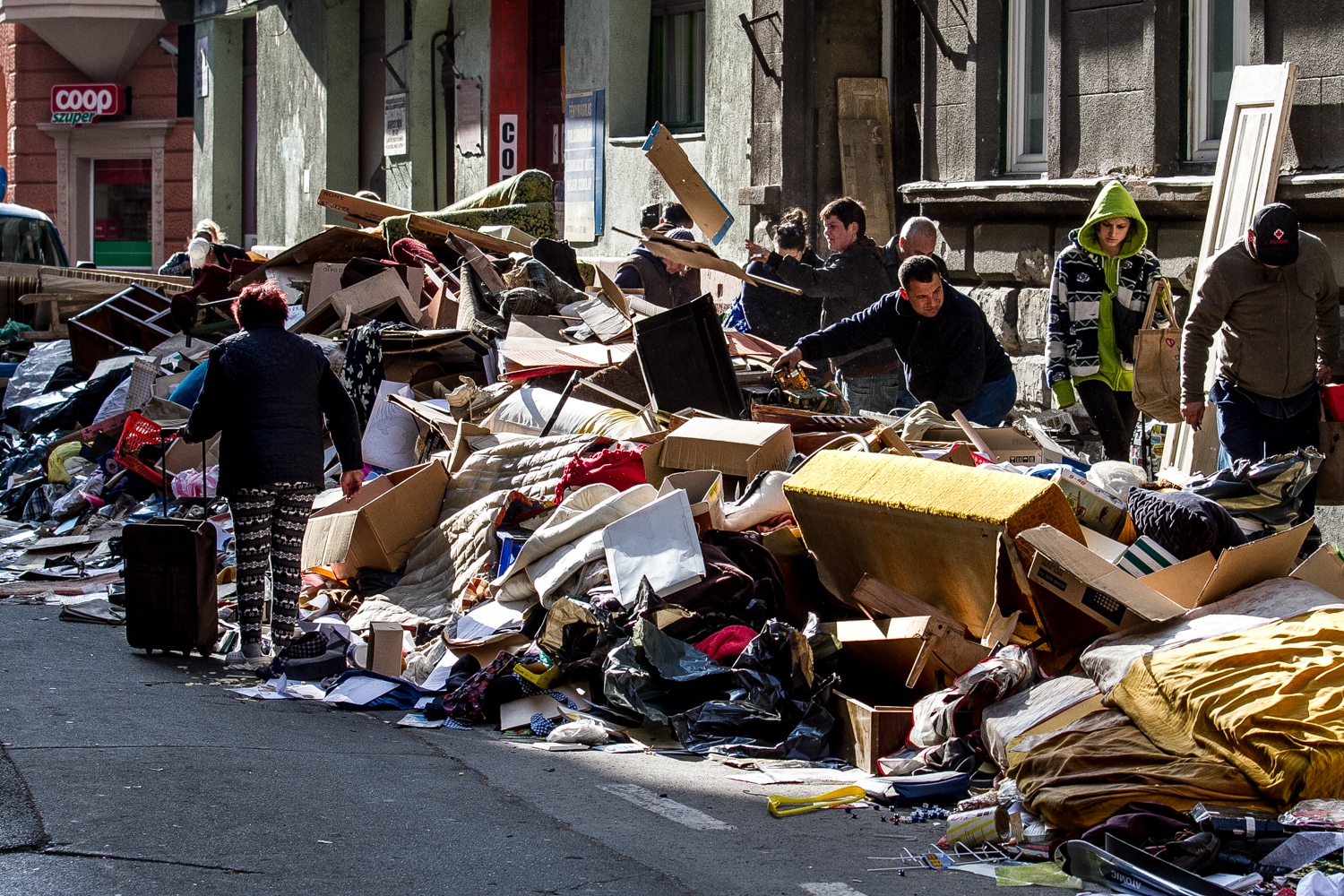Dating back decades, lomtalanítás is simple in concept but complex in societal interaction. At least once a year, residents of each Budapest district receive notice that they can throw away unwanted objects of almost any size and material by carting them down to the sidewalks in front of their buildings before a set lomtalanítás date. After tons of trash pile up throughout the neighborhood over the next few days, city workers laboriously pick up the motley debris in a fleet of trucks, and life goes back to normal… but during this period when the unwanted items lie up for grabs on the streets, a temporary sensation of lawless disorder reigns as opportunistic citizens from across the city descend into the lomtalanítás pyramids in search of whatever valuables they may find.
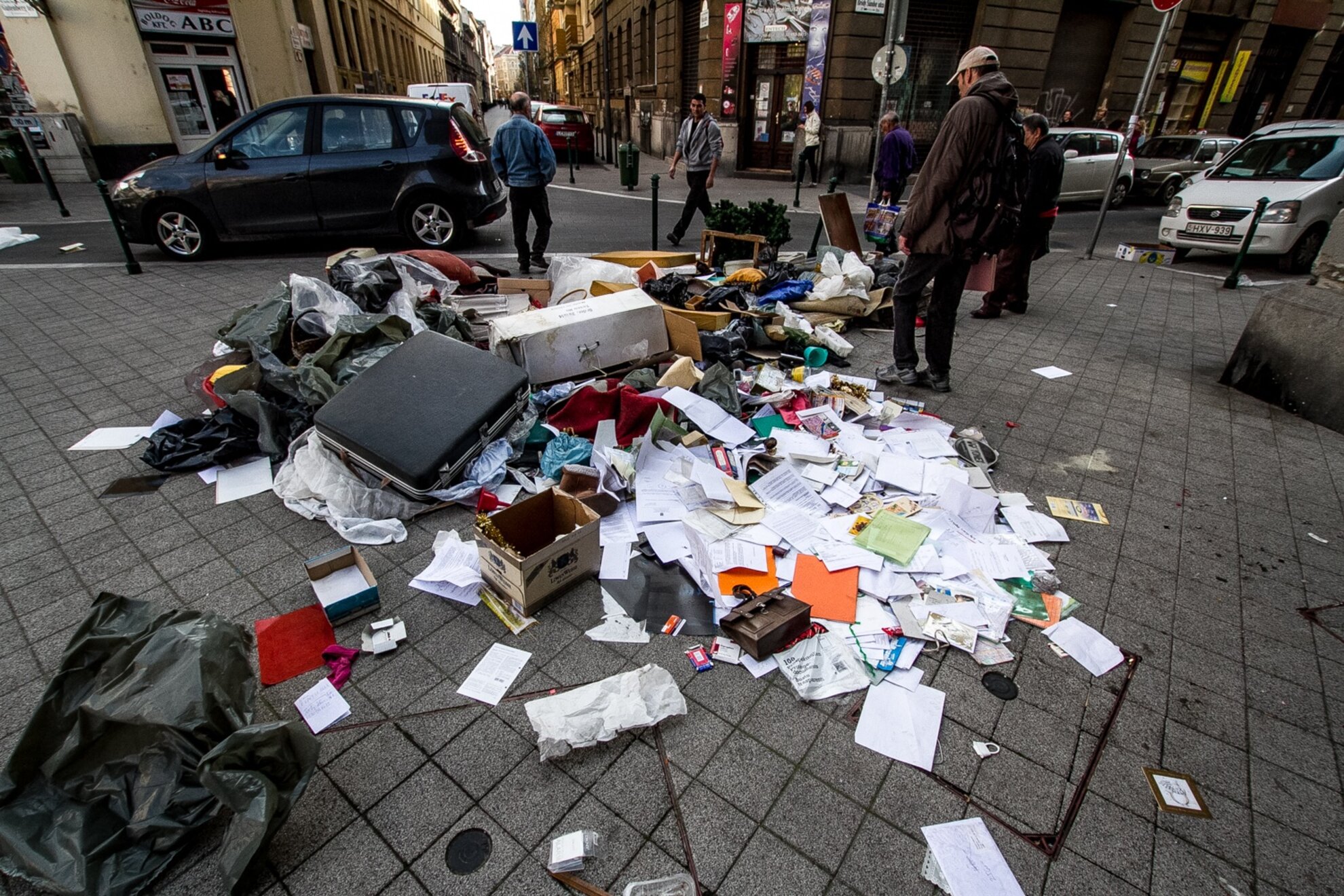
Not surprisingly, most of the scavengers obviously stand on the lower rungs of society’s ladder, and some teams of them are organized to the extent that their members apparently make a living by researching when districts are offering lomtalanítás days, and methodically scouring them in turn year-round; we’ve heard it said that if these dynamic rummagers applied this industriousness to their daily endeavors, they could lift themselves out of the cycle of poverty that causes them to subsist by digging through trash. However, considering the range of urban treasures that can be found on the sidewalks during lomtalanítás (particularly in the most posh parts of town), it’s quite possible that some professional scavengers earn more money by selling what they find than the income provided by Hungary’s minimum wage.
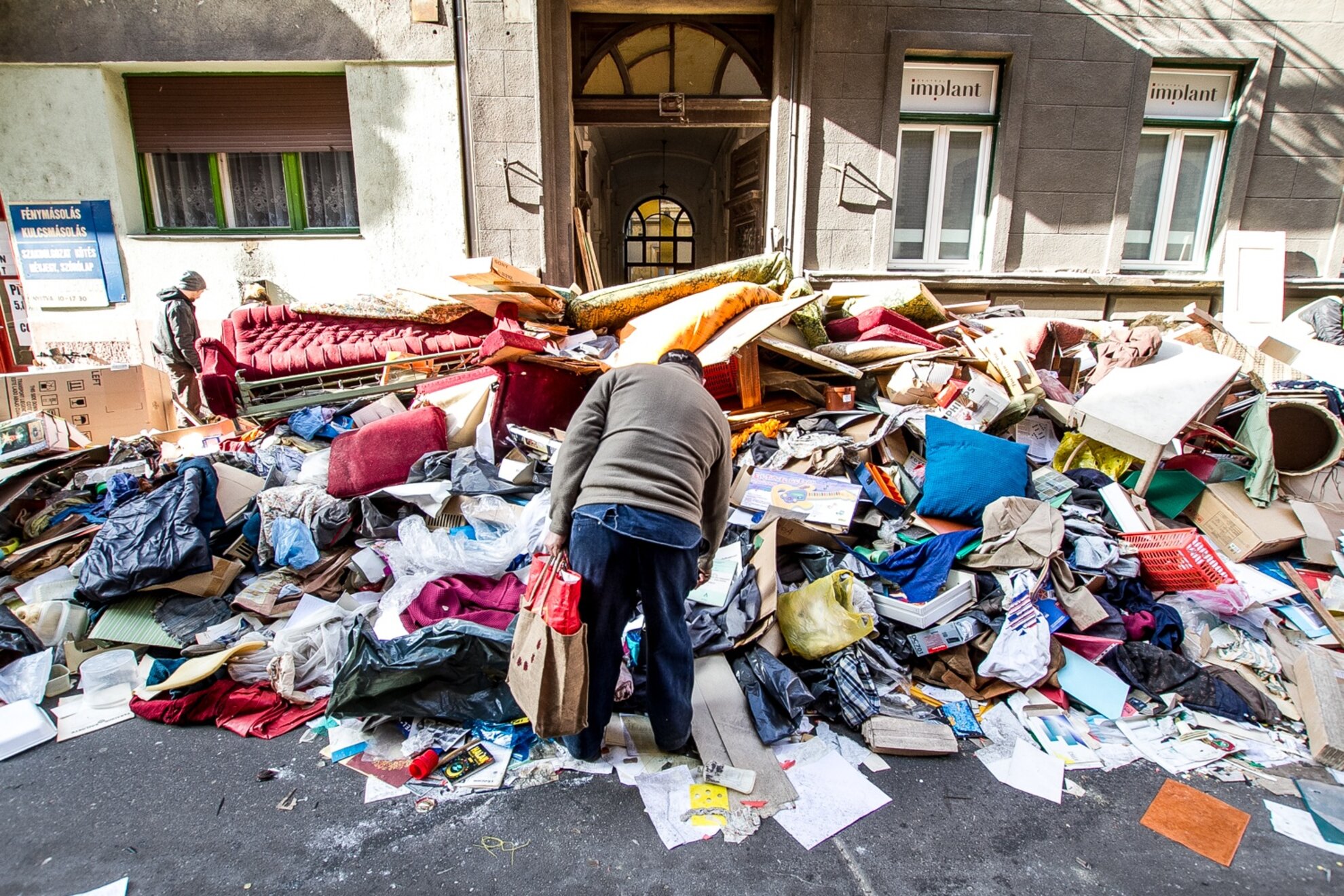
Regardless of the big-picture socioeconomic factors surrounding it, lomtalanítás is equally anticipated and dreaded by each community’s locals – while the opportunity to freely dispose of accumulated garbage is cherished by city dwellers of every district (especially those who slyly schedule home renovations to occur soon before this event), it also means that they must endure surreal scenes of trash piled up everywhere in their neighborhood while generally unsavory characters roam about and noisily sift through the rubbish with impunity. Many scavengers stake a claim to a stretch of sidewalk and search through the garbage as soon as it’s dumped, setting aside little collections of what may fetch a few forints while leaving behind the worthless detritus; serious foragers break open busted appliances or obsolete computers to harvest precious metals found within.
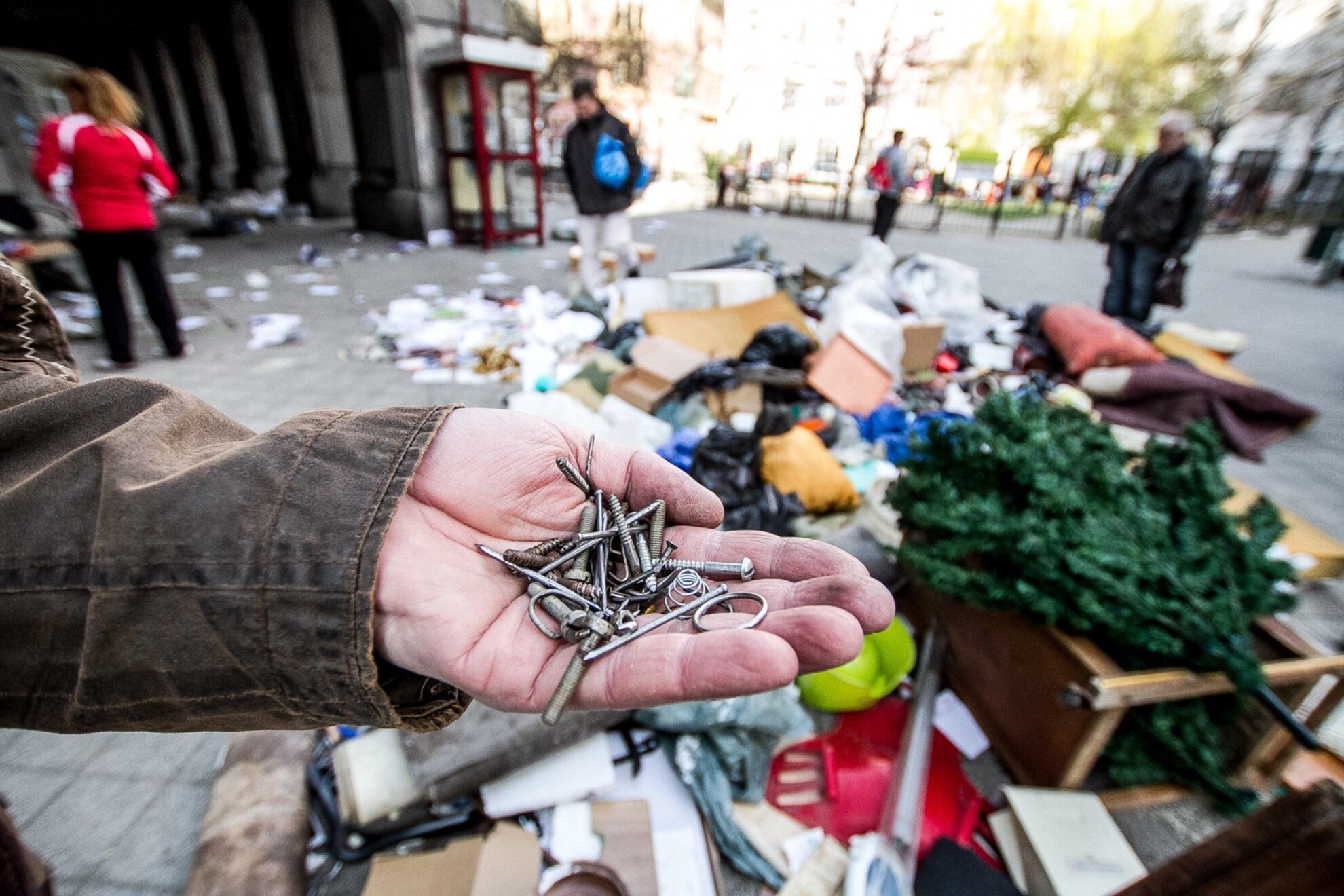
During the final day before a recent lomtalanítás pickup in Pest’s District VIII, we ventured an excursion through this litter-riddled scene; within the first few moments after passing Blaha Square from District VII, we encounter a fellow violently chopping a piece of old furniture with a lumberjack's ax, apparently just to remove the metal screws and hinges holding it together. This type of intimidating incident is anything but atypical during lomtalanítás days.
Indeed we must be careful when exploring lomtalanítás out of idle curiosity – especially if we find ourselves tempted to take home a random relic or pretty-much-OK coffee table – because most of the nicer items to be examined are already claimed by such professional scavengers… and while they might be willing to sell their new possessions on the spot for pocket change, we highly advise against attempting to claim ‘finder’s keepers’ on a seemingly unguarded piece of garbage that suddenly has its ownership vigorously contested.
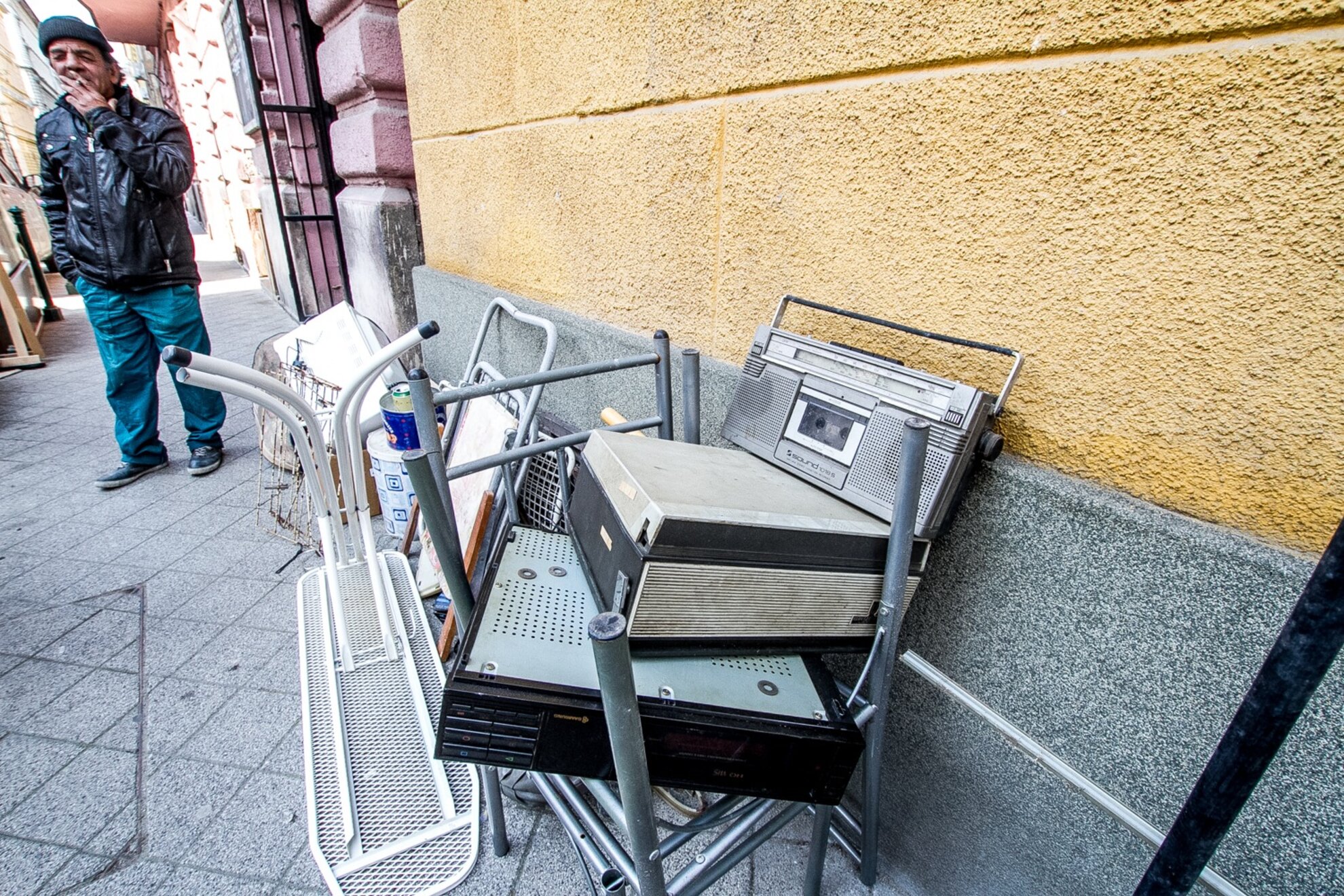
Walking through Budapest at the height of lomtalanítás days is an experience akin to setting out into a post-apocalyptic city where no apocalypse has occurred – papers cover the streets and swirl up into the dusty wind alongside already-airborne plastic bags amid a whirling atmosphere that echoes with breaking glass and twisting steel; below, sidewalks are buried under meters-high mounds of myriad junk, forcing pedestrians to wander down the middle of the road in a muddled haze.
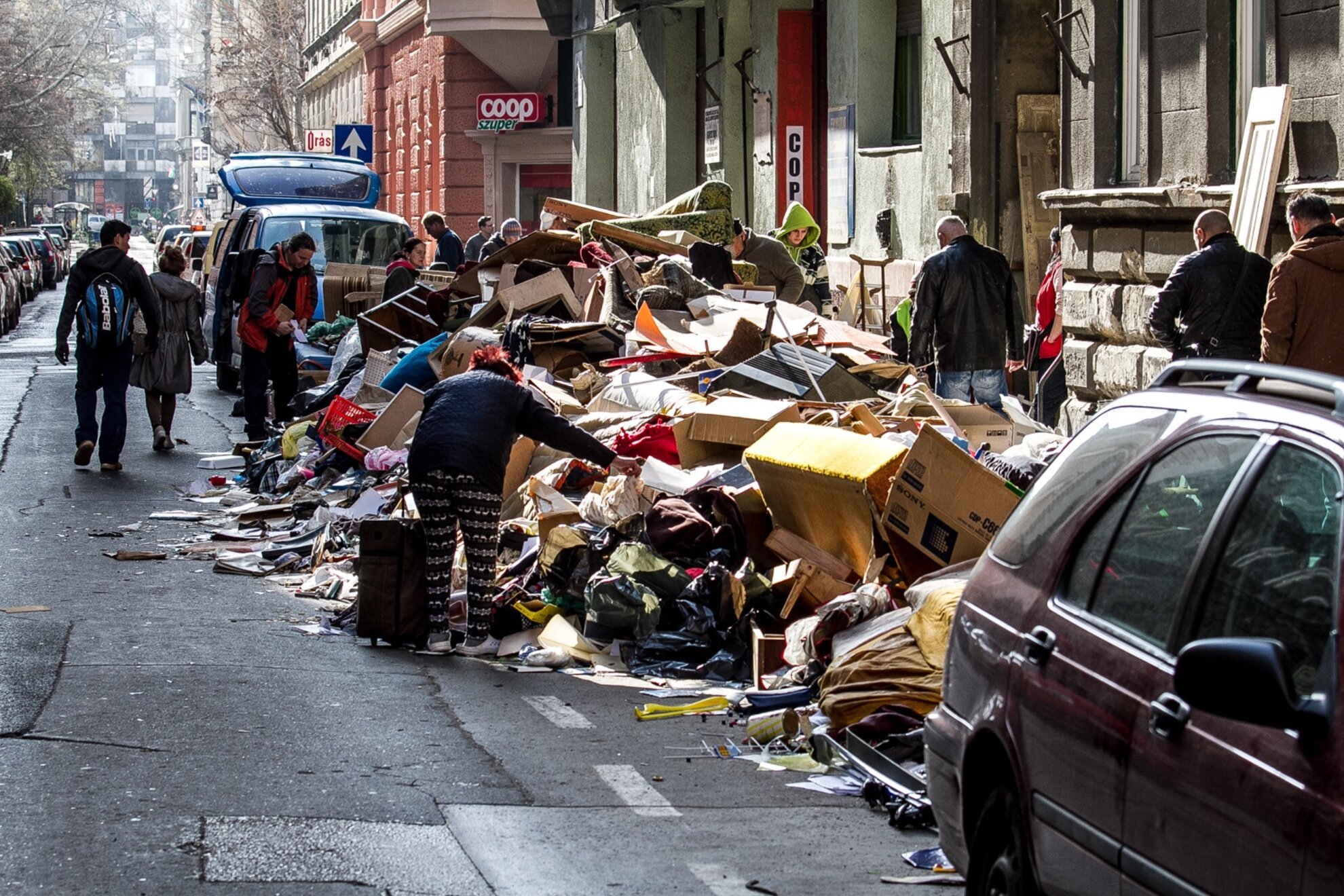
While expert scavengers dismantle rusty boilers and inspect stained washing machines, their relations relax amid makeshift outdoor living rooms complete with tattered couches and chipped porcelain vases atop scuffed end tables; here at least one member of the family will stand watch over their gradually growing pile of vaguely valuable stuff around the clock for days on end, often setting up their goods like an alfresco showroom for passersby to peruse – during our walk we momentarily mistook one genuine antique shop’s sidewalk display as a particularly tasteful lomtalanítás collection.
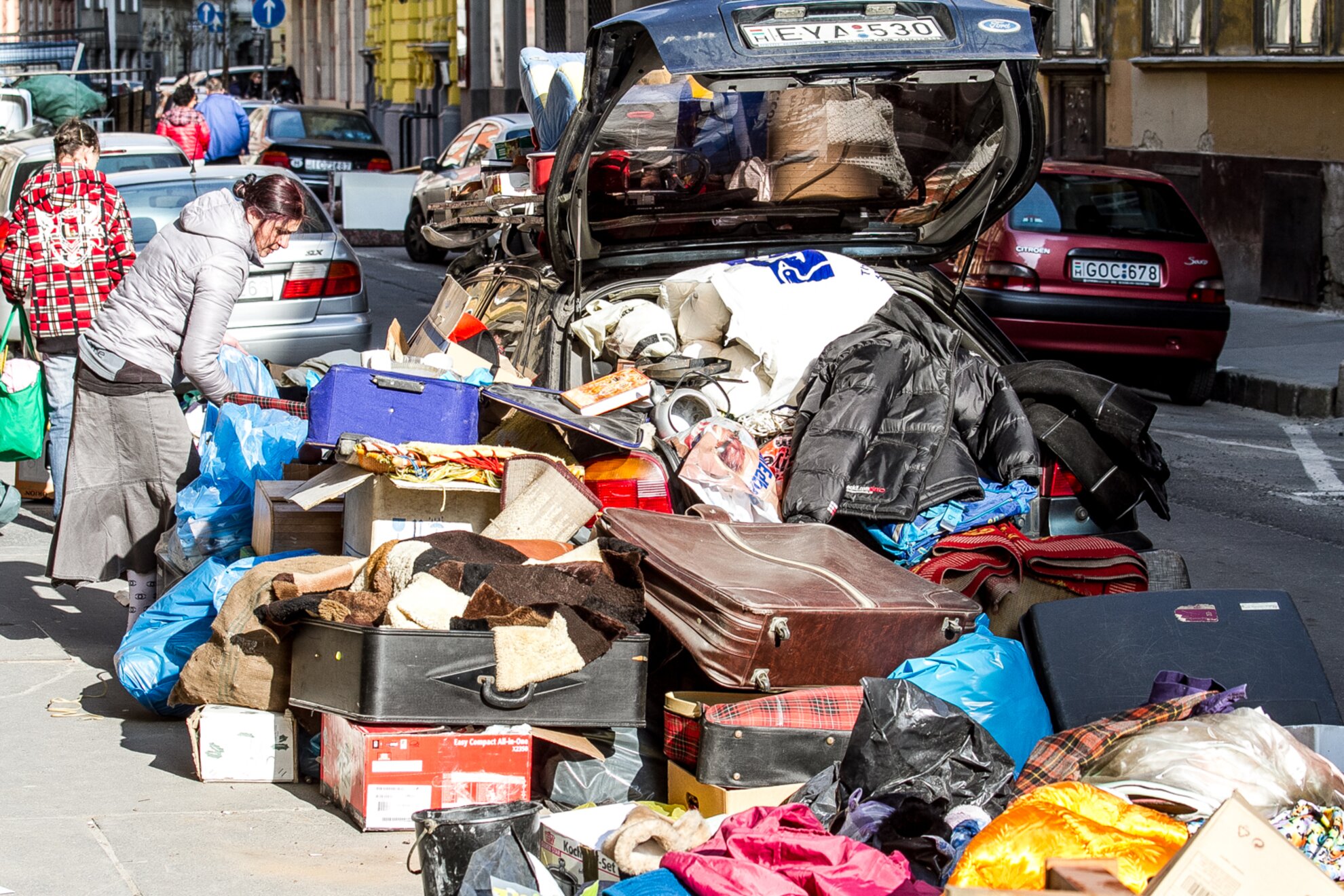
The sheer variety of what can be found cast in the gutter is fascinating, especially when the observer tries to imagine what went on in the lives of the junk’s previous owners. We find Bakelite records, Hungarian-language volumes of Marx, a single high-heeled disco-era shoe caught between bent spokes of bicycle wheels, leather suitcases ripped from unknowable travel adventures, a sportsman’s assortment of skis and sleds and fishing-tackle boxes, still-functional typewriters, tassel-festooned lampshades, newspaper pages from decades past, not-terrible oil paintings on grubby canvases, a doggie-shaped wooden brush holder, and so much more… all items that once decorated people’s daily lives, now abandoned to be picked through and salvaged or shipped to the trash heap.
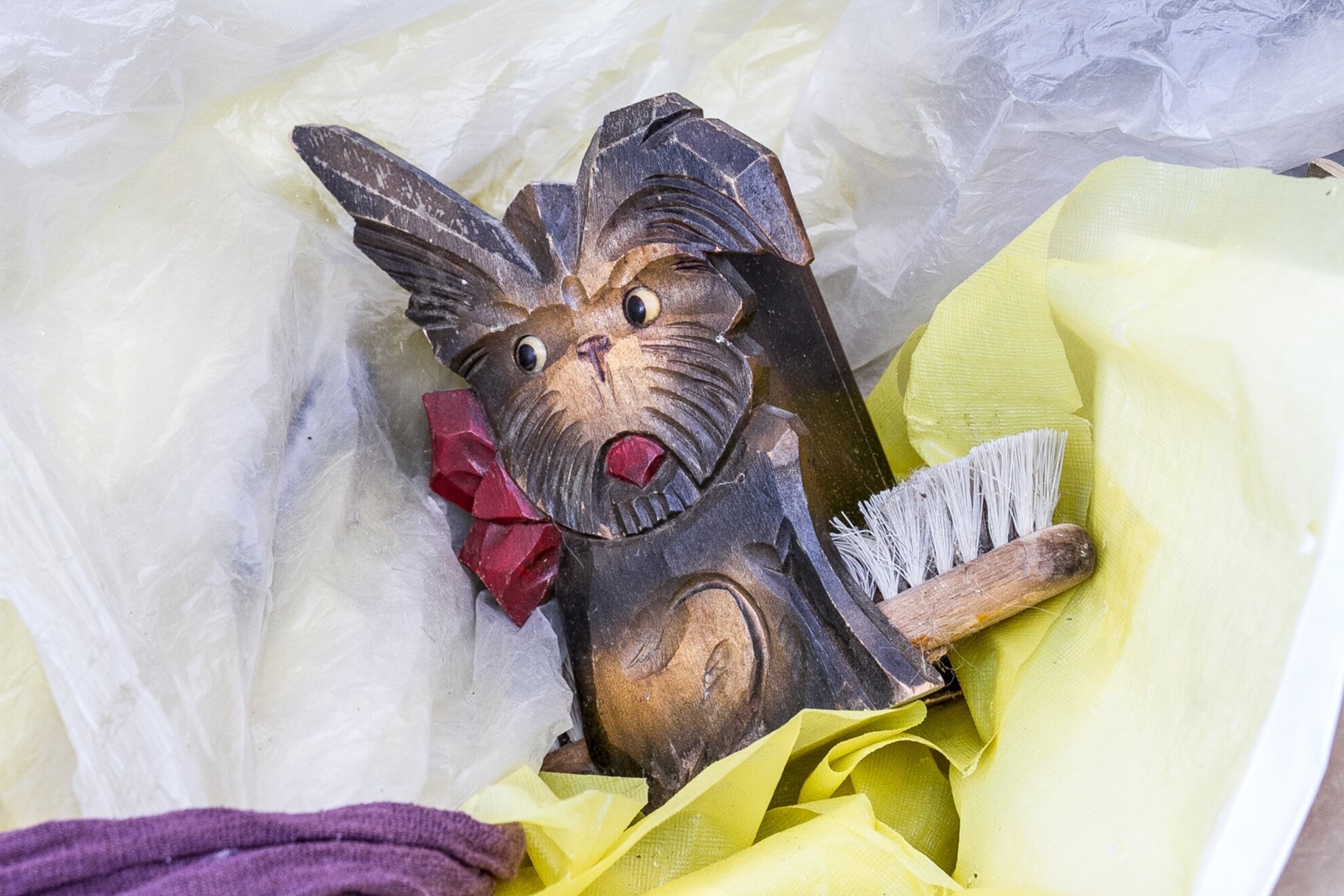
Of course, not everything lying about on the concrete qualifies as interesting, and quite frequently the trash is simply revolting – filthy carpets wrapped in greasy hoses, crusty insulation emitting carcinogenic dust, bottles of paint thinner and jars of blackened goop, empty beer cans dating back years or minutes, kitchen sinks coated in soap scum and lime, and a parade of cracked, soiled, and utterly repugnant toilet bowls around almost every corner, to name just a few of the nauseating hazards that can avalanche onto any unsuspecting forager.
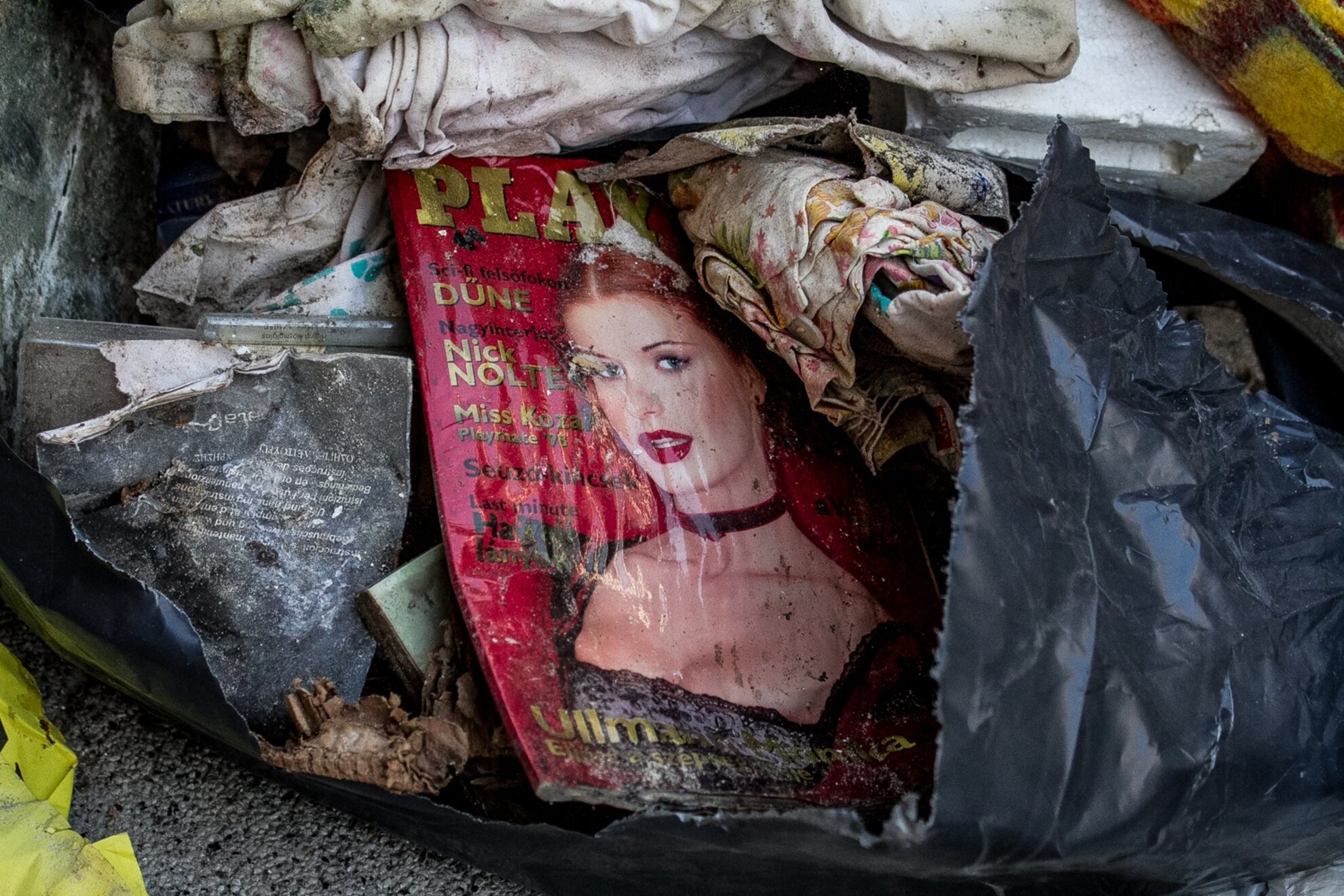
Beyond the disgust of such debris, a lomtalanítás trekker can discover some finds that are downright heartbreaking, like a torn-and-taped-together black-and-white passport photo of a woman contained within a humbly dignified miniature frame, apparently the only image of a long-gone loved one kept for decades before the picture’s owner passed away; we imagine family members arguing about whether this memento should be passed on or not while sorting through the deceased’s estate, with the snapshot eventually ending up here on the curb in a final public display of affection before being swept off to oblivion. And as dismaying as such imagined tribulations can be when observing once-precious keepsakes now callously discarded, it’s even more heart-rending to see the impoverished children of scavengers contentedly playing with newfound prizes of grimy stuffed animals or board games with missing pieces.
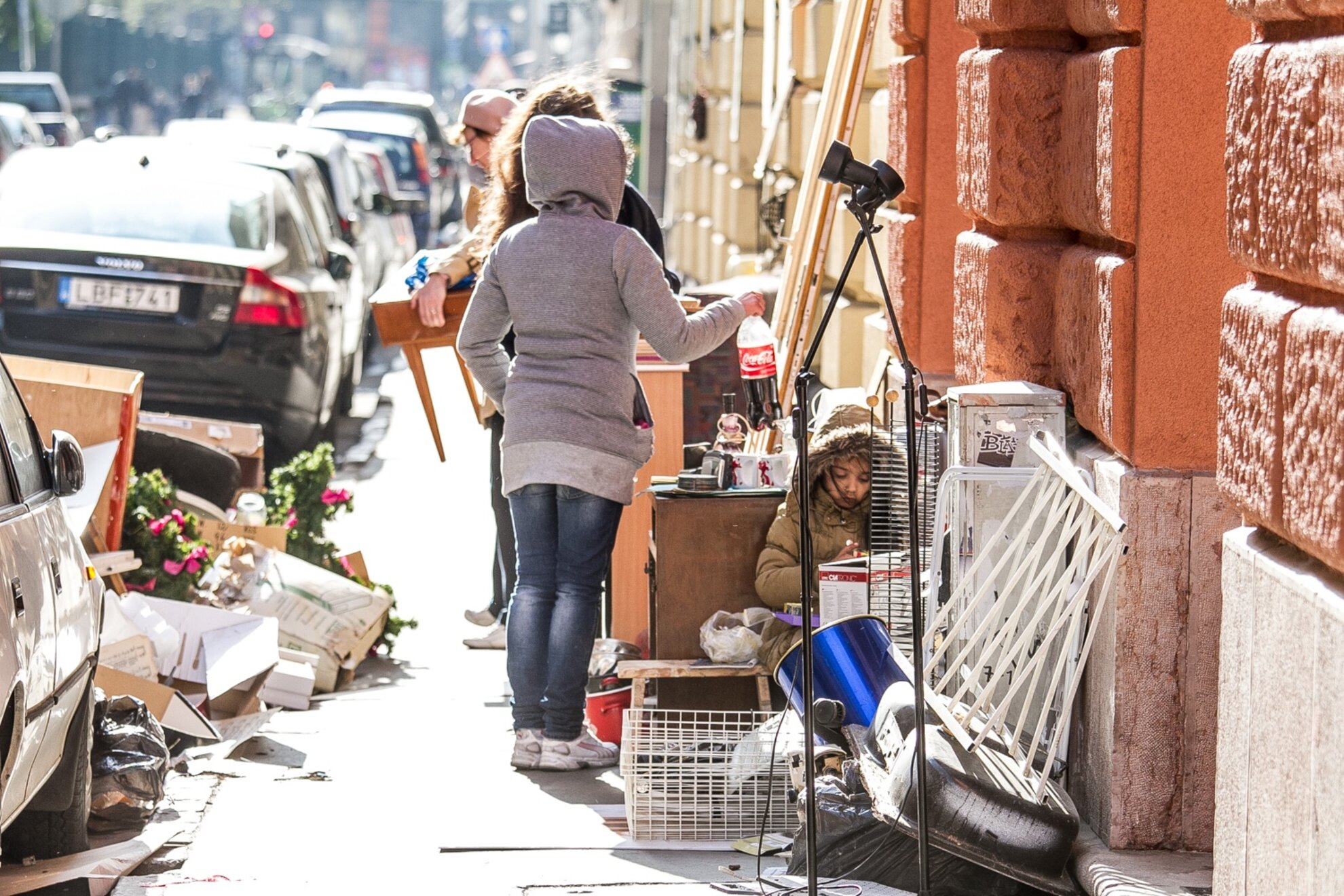
Nonetheless, lomtalanítás is also a boon to another oft-insolvent segment of Budapest’s population – its artists. There is no better source for intriguing objets trouvés than these multifarious piles of waste, and it’s not uncommon to see bohemian sculptors lugging scrap metal left unwanted by the pro foragers, or art students sorting through wildly colored clothing of decades past to see what can be ‘upcycled’ into a modern found-object collage (after a thorough washing, we hope).
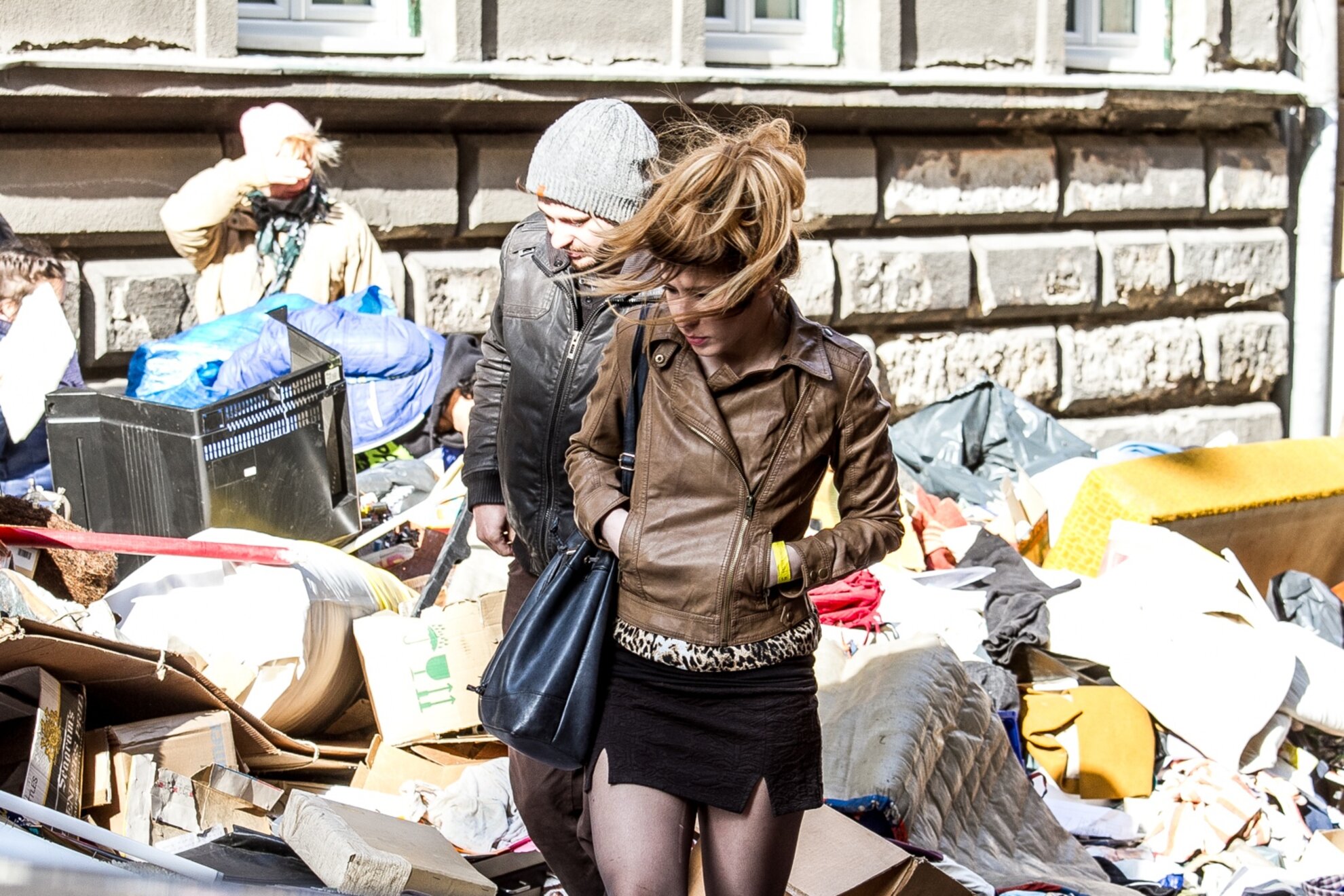
Among the crowd of local residents that navigate this grubby setting while attempting to go about their everyday tasks (occasionally bringing necktie-clad businessmen face-to-face with their lower-class counterparts of free enterprise), random hipsters may find themselves so impressed by a funky vintage armchair or kitschy painting that they immediately haul them home. It’s worth noting that many of Budapest’s original ruin pubs – now one of Hungary’s primary tourism draws – were decorated with lomtalanítás furniture, showing that the discarded relics from bygone eras can still possess powerful aesthetic appeal in the 21st century, and can be repurposed into cutting-edge commodities.
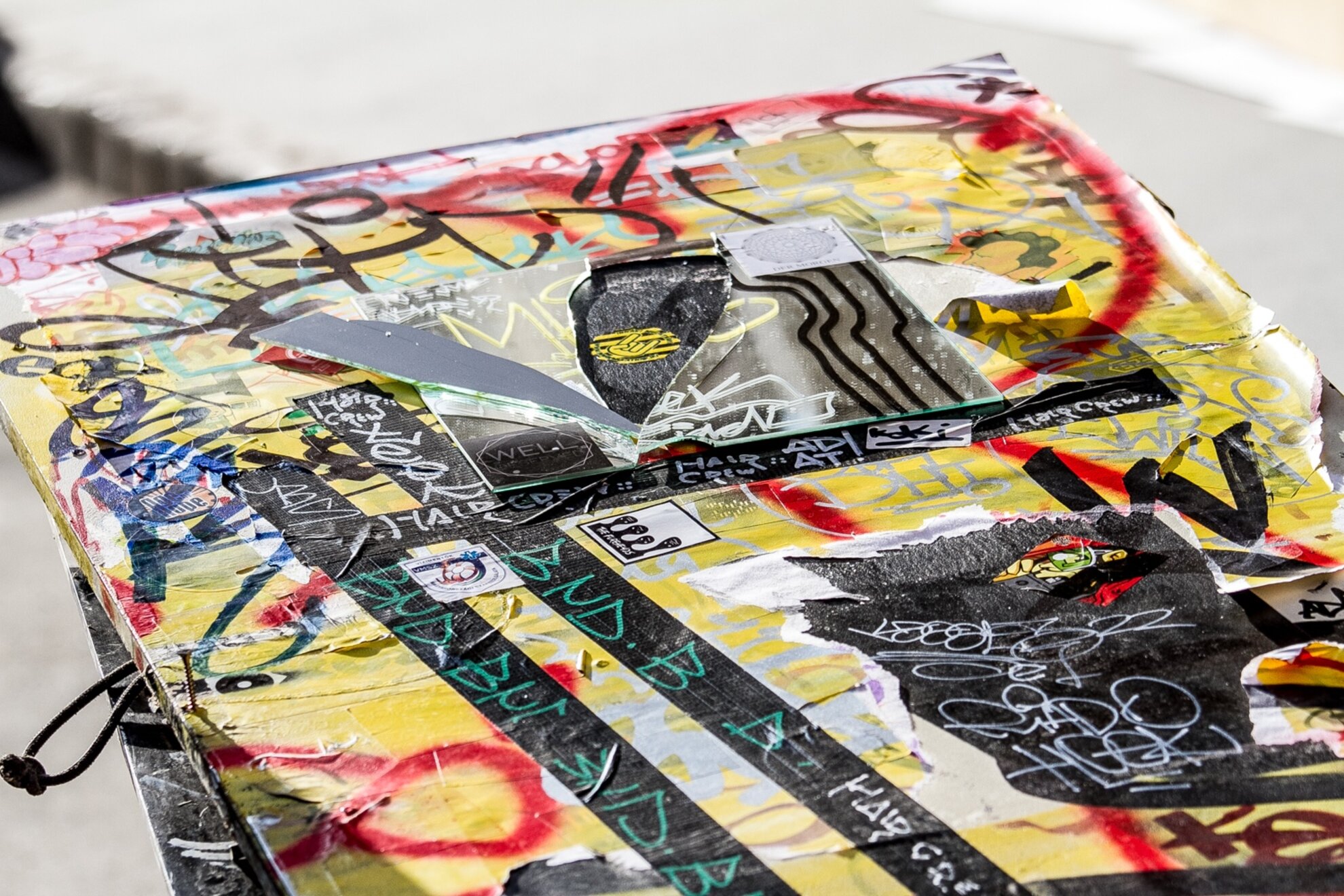
Every now and then, Budapest officials consider ending the practice of lomtalanítás, reasoning that government-funded trash disposal may have been apropos during Hungary’s communist era, but in our current age of capitalism, shouldn’t residents pay for their own garbage clearance? And eradicating lomtalanítás would also relieve every district of the unsightly spectacle of scavengers marauding through high stacks of debris, these authorities say.
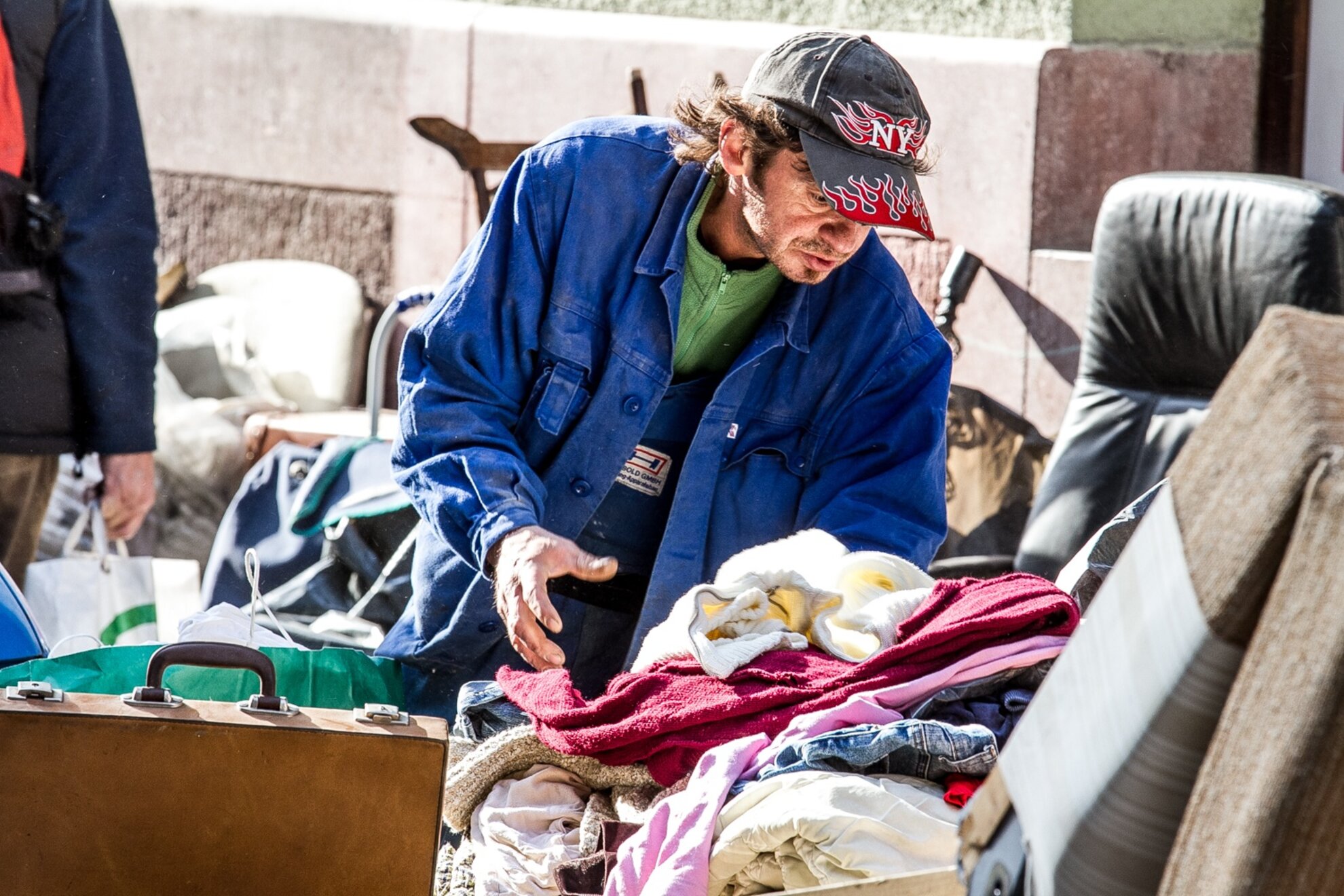
However, we believe that lomtalanítás is a Budapest institution worth preserving, and not only to provide a convenient way to keep buildings clutter-free while passing on possessions to those in need and creating temporary retro museums in the streets. Lomtalanítás is a stark reminder that we share this city with people of all backgrounds, and if we lose sight of this perspective, we are throwing away a valuable piece of our own humanity.
